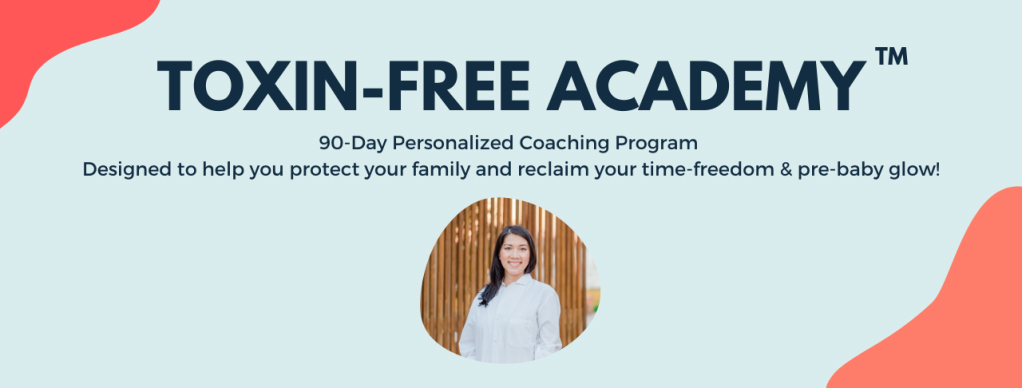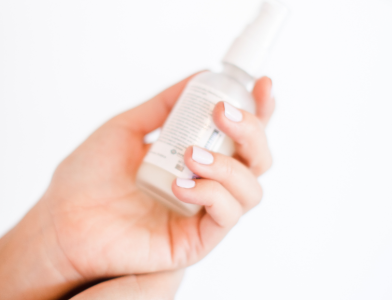What is an influencer?
In the age of social media there are “influencers” popping up left and right. Everyone suddenly thinks they are an influencer. But what exactly is an influencer?
According to influencermarketinghub.com:
“An influencer is someone who has:
the power to affect the purchasing decisions of others because of his or her authority, knowledge, position, or relationship with his or her audience.
a following in a distinct niche, with whom he or she actively engages. The size of the following depends on the size of his/her topic of the niche.
It is important to note that these individuals are not merely marketing tools, but rather social relationship assets with which brands can collaborate to achieve their marketing objectives.” (1)
What this means is that literally anyone can pop up on social media and claim to be an influencer or expert in any topic they like. An influencer used to be someone with a massive following, possibly a celebrity like Kim Kardashian. But even having a large following does not mean that someone knows what they’re talking about. More often than not, people are buying what influencers promote simply because they wish to emulate that lifestyle or achieve the purported result.
Nowadays, people with much smaller followings of maybe even a few hundred are being called “micro-” or nano-influencers” and are being contacted by companies to promote their products for a cut of the profits. People are popping up out of the woodwork wanting to get in on the action. According to Wondershare, the most successful YouTubers can earn upwards of $16.5 million per year (2). And how could we forget about the influencer Kylie Jenner who made billions on social media?
And if you notice from the definition above, an influencer is someone that is a relationship asset meaning they could have zero expertise or qualifications to speak about a certain topic. But as long as their followers have a trusting relationship with that person they will consider them to be an influencer and will be more likely to buy whatever they’re selling. Of course, there are legitimate experts or people who have experience in a certain area that can be considered an “authority” figure, but it all boils down to trust.
Why Influencer Marketing Can Put You in Danger
There has been an influx of influencers on social media promoting products they claim to be “safe” and “clean.” In case you didn’t know, these terms are not federally regulated by the FDA and are therefore not defined by the government. This means that manufacturers are free to use these terms any way they please as part of their marketing and sales pitches. This brings up yet another important issue – who to trust?
Trust is likely the single most important factor when comes to buying a new product based on someone’s recommendation. If you’ve never heard of a brand, but someone you trust is suggesting it to you then you’re more likely to buy than not right? But what’s most critical to consider is the source of the information.
If someone is recommending a product to you that’s marketed as “safe,” “clean,” or “non-toxic” you must ask yourself:
What makes this person qualified to speak about safety?
What is their educational background?
Why is this person recommending this product?
Did they research or vet this product?
Did they provide scientific justification for these claims?
What are the ingredients in this product?
Are the ingredients actually safe or is it deceptively marketed?
It can be enticing to desire what you see on social media and yearn for the type of luxurious lifestyle and glowing, youthful skin that we fantasize about, but we must exercise caution and take every recommendation with a grain of salt. Blindly buying into influencer-promoted products is hazardous not only to your health, but your family, and the environment. Some question whether or not the influencer has actually used the product before promoting it.
You may not think this applies to you because you’re young or don’t have any obvious health issues, but you must consider that every single product you use or item you bring into your home is adding to your overall toxic burden. The major concern is not acute or short-term exposures, but rather the chronic, low dose exposures to a multitude of chemicals with similar biological effects from several product types for long periods of time. To make matters worse, if toxicants are not being removed or cleared from the body and are accumulating in your tissues the way heavy metals do, then at some point you will exceed your toxic threshold. The textbook definition of threshold is the “dose at which toxicity is first observed; at doses below this level, the probability of an individual responding is zero.” (3) Once you exceed your toxic threshold then you will begin to see adverse health effects, and if left untreated, they can develop into chronic disease. Each person’s toxic threshold is different and depends on your genetic background and lifestyle. For instance, if you have a polymorphism in a gene encoding detoxification enzymes leading decreased activity means you will have a lower toxic threshold than someone else with normal detoxification capacity. Evidence shows that a polymorphism in the human gene for glutamate cysteine ligase (GCL), the gene that encodes the enzyme which makes glutathione, is functionally significant and could lead to lower resistance to cellular stress (4,5)
You may also be thinking that the products you apply to your skin won’t affect your health, but this is completely incorrect. It is well known that ingredients in personal care products absorb across the skin into the bloodstream to a certain extent. Some absorb more easily than others, which is the case with fat-soluble or oil-based products. Some factors that affect dermal absorption include 1) integrity of the skin, 2) hydration of the skin, 3) temperature, 4) solvents used in the product, and 5) molecular size of the ingredient. Often times you will find that low quality products use solvents to dissolve ingredients, which can also act as penetration enhancers leading to increased absorption of ingredients into the bloodstream.
Warning for Pregnant Women
No matter how early you are in your pregnancy it’s never early to start focusing on removing and avoiding toxins to protect you and your unborn child. Toxicants can absorb into your bloodstream through products applied to your skin or sprayed into the air such as cleaning products. They can pass through the placenta and affect your unborn child. Such is the case with phthalates (6) and perfluorooctanoate (PFOA) or Teflon, particularly when it comes to brain development and function. It has been shown that increased exposure to PFOA is associated with an increase in brain defects in a human population living near a chemical plant in West Virginia and Ohio (7). It is often the case that toxicological studies are performed using doses of chemicals that far exceed relevant human exposure. That’s why the following study is so compelling. Rats exposed to physiologically relevant doses of a mixture of phthalates commonly found in household items during the perinatal period, which is the time around the end of pregnancy and the first weeks after birth, caused long-term effects on brain structure and function including behavior (8). Could there be implications for neuropsychiatric disorders?
Summary
Influencers are so prevalent in today’s society and it’s our responsibility to discern whether what they’re promoting is authentic and legitimate especially when it comes to our health. Always consider the source of information you’re receiving and determine if the influencer is qualified to make their statements. It’s imperative to do your own research and see if you can find the same type of information from a few trustworthy sources, which could give you confidence in your decision-making. Don’t blindly trust your health to someone because you admire or want to emulate them because it could have long-term health consequences for you and your children. Furthermore, you could be wasting valuable time and money unless you empower yourself with the knowledge to find safe products on your own and don’t need to rely on influencer recommendations.


You are invited to apply for the Toxin-Free Academy TM! It’s my 90-day signature personalized coaching program designed to take you from confused and overwhelmed to confident and knowledgeable AF. You’ll be able to identify all the sources of environmental toxins in your home so you can eliminate them for good and shop for the healthiest products so you can protect your family and reclaim your time freedom & pre-baby glow. Click here to apply!
References
(1) (2020, May 26th) What is an Influencer? https://influencermarketinghub.com/what-is-an-influencer/
(2) Brown, Liza. 2020. How To Make Money on YouTube. Wondershare Filmora. https://filmora.wondershare.com/vlogger/how-to-make-money-on-youtube.html
(3) Aleksunes, LM, and Eaton, DL. 2019. Principles of Toxicology. Klaassen, CD. Casarett & Doull’s Toxicology. The Basic Science of Poisons (9th Edition, pp. 37). New York.
(4) Walsh AC, Feulner JA, Reilly A. Evidence for functionally significant polymorphism of human glutamate cysteine ligase catalytic subunit: association with glutathione levels and drug resistance in the National Cancer Institute tumor cell line panel. Toxicol Sci. 2001 Jun;61(2):218-23. doi: 10.1093/toxsci/61.2.218. PMID: 11353130.
(5) Nichenametla SN, Ellison I, Calcagnotto A, Lazarus P, Muscat JE, Richie JP Jr. Functional significance of the GAG trinucleotide-repeat polymorphism in the gene for the catalytic subunit of gamma-glutamylcysteine ligase. Free Radic Biol Med. 2008 Sep 1;45(5):645-50. doi: 10.1016/j.freeradbiomed.2008.05.012. Epub 2008 May 24. PMID: 18549827; PMCID: PMC2562218.
(6) Parkhie MR, Webb M, Norcross MA. Dimethoxyethyl phthalate: embryopathy, teratogenicity, fetal metabolism and the role of zinc in the rat. Environ Health Perspect. 1982 Nov;45:89-97. doi: 10.1289/ehp.824589. PMID: 7140701; PMCID: PMC1569010.
(7) Stein CR, Savitz DA, Elston B, Thorpe PG, Gilboa SM. Perfluorooctanoate exposure and major birth defects. Reprod Toxicol. 2014 Aug;47:15-20. doi: 10.1016/j.reprotox.2014.04.006. Epub 2014 May 4. PMID: 24803403; PMCID: PMC4117925.
(8) Kougias DG, Sellinger EP, Willing J, Juraska JM. Perinatal Exposure to an Environmentally Relevant Mixture of Phthalates Results in a Lower Number of Neurons and Synapses in the Medial Prefrontal Cortex and Decreased Cognitive Flexibility in Adult Male and Female Rats. J Neurosci. 2018 Aug 1;38(31):6864-6872. doi: 10.1523/JNEUROSCI.0607-18.2018. Epub 2018 Jul 16. PMID: 30012688; PMCID: PMC6070669.



